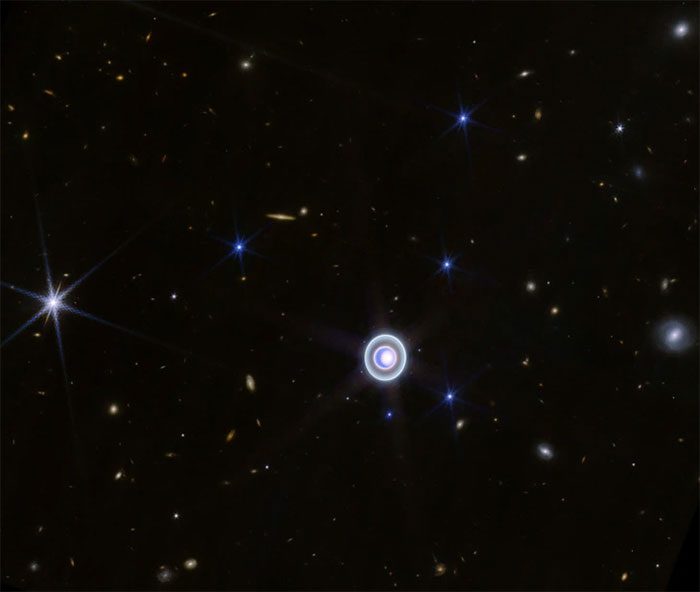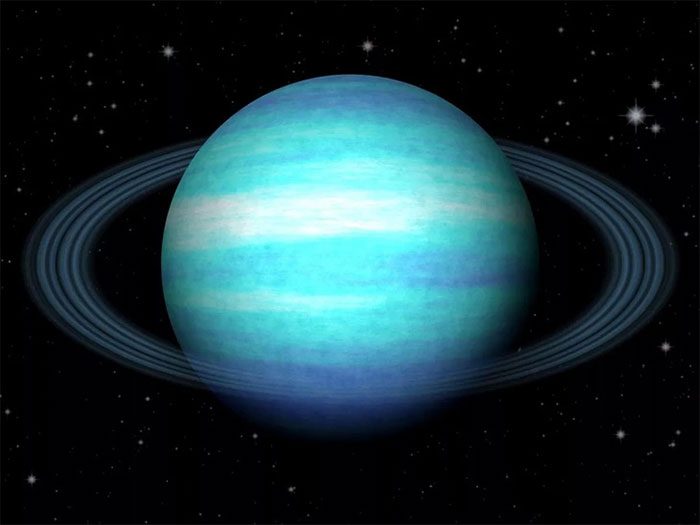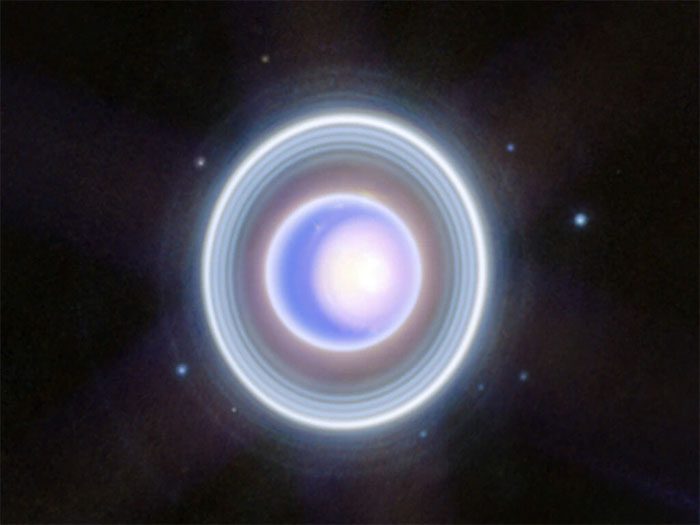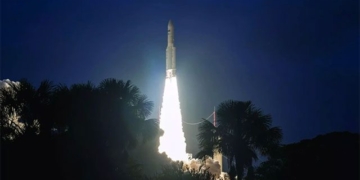The Latest Images Reveal Many Mysteries of Uranus, One of the Farthest Planets in the Solar System.
The United States space agency (NASA) has just released the clearest and most recent images of Uranus, one of the farthest planets in the Solar System.

The latest images released by NASA of Uranus – (Image: NASA).
The images were captured by the James Webb Space Telescope, focusing on the inner and outer rings of Uranus. The superior capabilities of James Webb allow it to capture even the faintest rings that current telescopes cannot fully reveal.
The white spots on the rings of the planet consist of rocky dust and ice. Meanwhile, the atmosphere of Uranus also displays white spots, which are layers of frost. The ice layers become more distinct towards the poles.
The polar ice caps are also a characteristic feature of Uranus, as its great distance from the Sun results in extremely cold temperatures.

The distinctive rings of Uranus – (Image: NASA).
The information discovered indicates that a complete orbit around the Sun for Uranus is equivalent to 84 Earth years. This means that the polar regions experience 42 years of total darkness followed by 42 years of continuous sunlight.
This is one of the reasons why the poles of Uranus are among the coldest regions in the Solar System.
Astronomy experts indicate that from the new images captured by NASA, it is also possible to see a storm forming beneath the southern polar ice cap. This storm may be generated by annual meteorological effects.
Storms in Uranus’s atmosphere have long been a fascinating research topic for scientists. They have discovered that due to Uranus’s extreme axial tilt of about 98 degrees, the seasonal differences are very severe, creating conditions for extreme weather phenomena.

The moons of Uranus observed surrounding the planet – (Image: NASA).
Thanks to its capability to capture images in the infrared spectrum, James Webb has also photographed the rare moons of Uranus. This planet has a total of 27 known natural satellites (moons).
Currently, telescopes larger than 25 cm can observe some of the larger moons of Uranus, such as Titania and Oberon.
NASA believes that the new discoveries from the latest images captured by James Webb will pave the way for upcoming missions to explore this distant planet in the Solar System.




















































